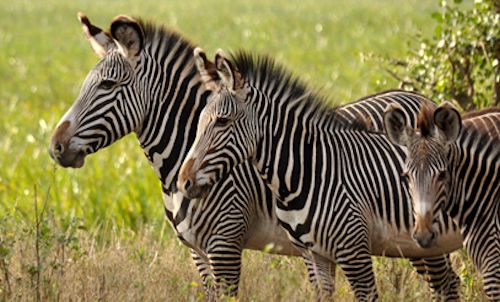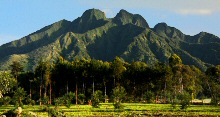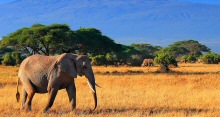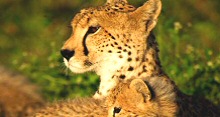 The Grevy Zebra has long legs, and it is the largest among wild equids. They are generally taller as well as heavier in comparison to Burchell’s and have big ears on a big head. Their coats are generally shiny and dispel more than 70% of all the heat they get on their bodies. Some scientists’ reports unveil that these strips enable the zebras to withstand severe solar radiation. During day time, their pattern is very visible and this you can see on your Safari in Kenya however in the late evening as their predators become more active, these zebras appear blurry and occasionally confuse their predators misrepresenting their actual distance.
The Grevy Zebra has long legs, and it is the largest among wild equids. They are generally taller as well as heavier in comparison to Burchell’s and have big ears on a big head. Their coats are generally shiny and dispel more than 70% of all the heat they get on their bodies. Some scientists’ reports unveil that these strips enable the zebras to withstand severe solar radiation. During day time, their pattern is very visible and this you can see on your Safari in Kenya however in the late evening as their predators become more active, these zebras appear blurry and occasionally confuse their predators misrepresenting their actual distance.
A Grevy Zebra’s stripes are more in number and narrower in comparison to those of plain zebras. Similar in all species of zebras, the stripes found on their forequarter form a characteristic triangular pattern, however when it come to the Grevy Zebra, they have such a pattern on their behind-quarter, whereas others simply have a horizontal or a slanted pattern.
Grevy Zebra unlike Burchell’s Zebras (which live in the savannahs, open grass lands and normally seen in the millions of animals that migrate through the Serengeti), are currently living in some areas within Northern Kenya only. Despite the fact that they are more adapted to the semi-dry conditions in comparison to other types of elephants, they compete for water with the domestic animals living in that area.
Their family members are bond together by strong families ties and can remain together for several years. They are commonly seen standing together nibbling the hair on the back as well as the neck of each other thus developing mutal bonds among themselves. They look out for each other and in case any of them is missing, they set out and search for it.
The females observe and respect the hierarchical system within the family. The group is led by the dominant mare and the rest follow her each with its young ones. Normally the least in rank are found at the back of the line.
Generally zebras are fervent grazers and are always in constant search for fresher and green pastures. However during the dry months, they survive on the dry grass and will move in search for water holes to drink water.
For more information about the wildlife in Uganda, please visit adventureugandasafari.com












